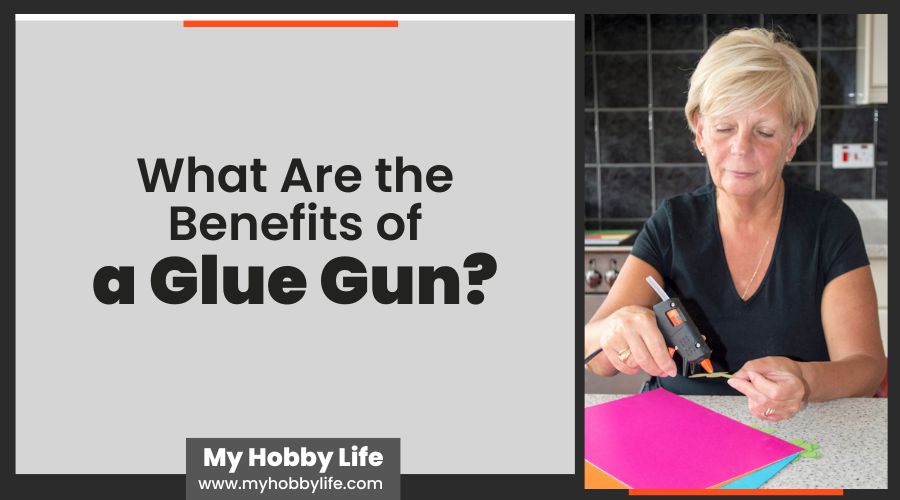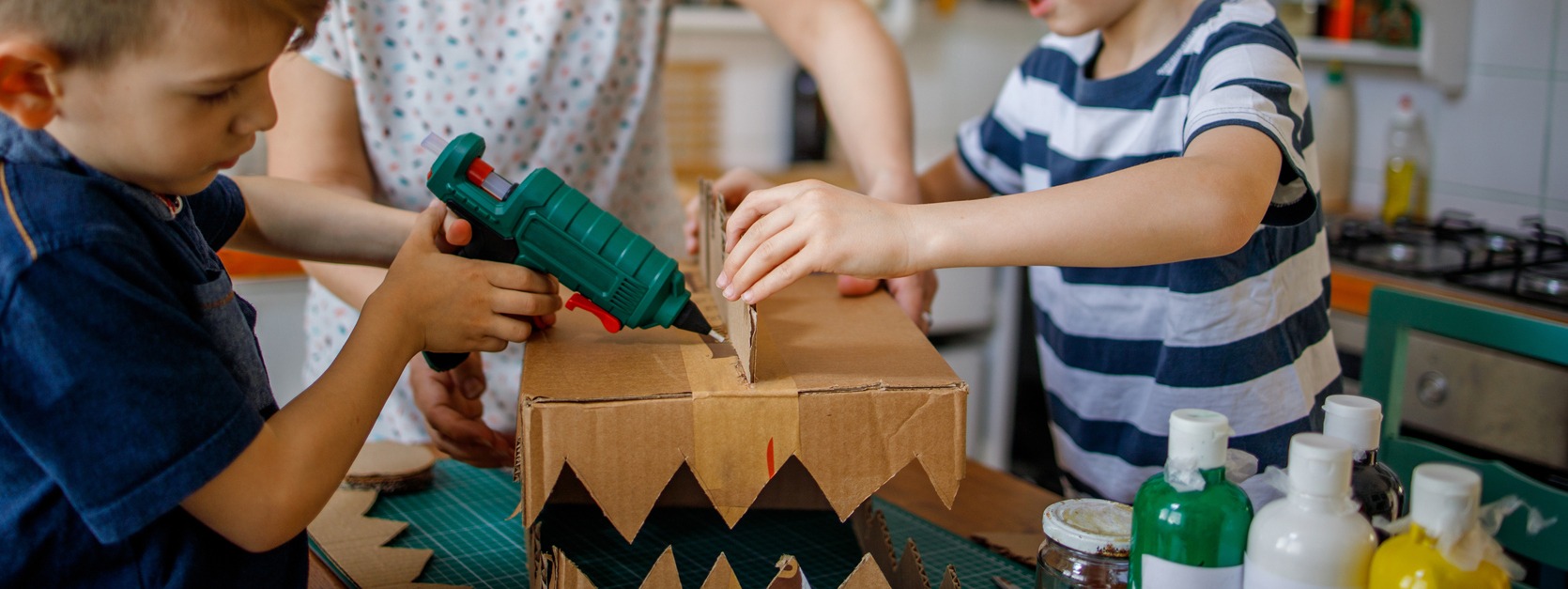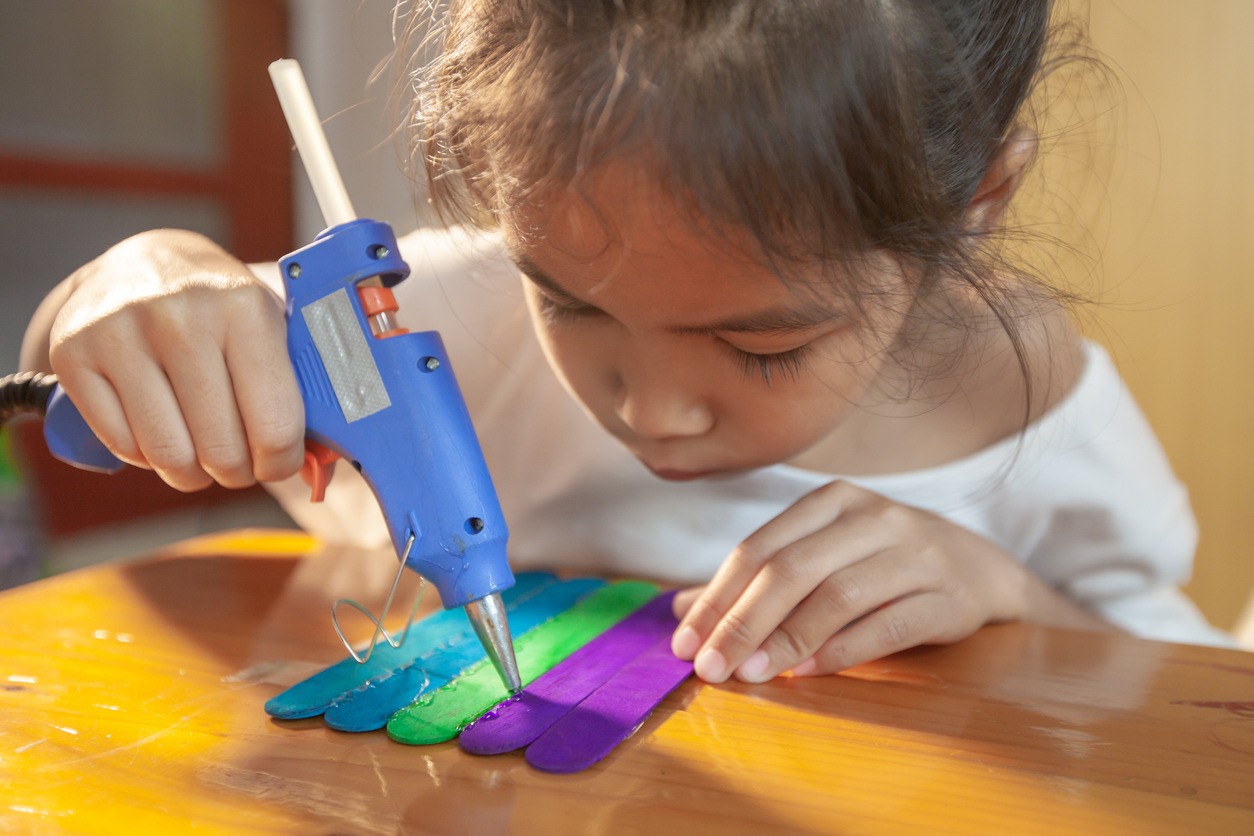Art is a discipline that calls for exactness and precision; thus, many everyday tools are used in the magnificent and creative world of art and craft. A Glue Gun is a versatile tool with many applications in the creative industries. Compared to regular glues, this one offers a far more powerfully heated adhesive that can link almost anything with just a little heat and glue. The best part is that your rifle has a pointed nose, which increases your accuracy.
What is a Glue Gun?
A glue gun is a device used to apply hot, quick-drying adhesives to different surfaces. Glue guns are commonly used to mend broken pottery and ripped picture frames around the house. They melt the glue with an electric heating source, turning it into a liquid.
A hot glue gun, also known simply as a glue gun, is a handheld tool used to heat liquid or solid glue. The melted adhesive is then squirted out of the gun’s nozzle and applied to the target. Originally developed to adhere shoe soles together, glue guns are now indispensable to DIY enthusiasts, tradespeople, crafters, and professionals in many other fields. Because it can be shaped and peeled away easily, hot glue is great for making quick repairs.
How to Safely Use Glue Guns?
This section will cover some of the most important safety measures you should take when working with a glue gun.
1. Get the glue gun ready. Before using a glue gun, check that it is in good working order. Before utilizing a previously used device, ensure the cord is not frayed or ripped and that there is no old adhesive residue inside the nozzle.
2. Put a glue stick into the glue gun. Place a hot glue stick at an angle within the heating chamber and push firmly until it is set. If you’re using hot glue, follow the product instructions for the right size stick.
3. Start the glue gun and let it warm up. Glue guns can either be fixed at a single temperature or adjusted to the desired temperature. An adjustable temperature setting is a must if you need to glue together various materials with varying heat requirements. A glue gun with a fixed temperature may be sufficient when just joining dissimilar materials, such as paper and plastic. Typically, glue guns need six minutes to heat up and be ready for use again.
4. Test the glue gun. Check the temperature of the glue with a scrap of paper. When the glue is clear and runny, it’s time to utilize it. Use a low heat setting if two comparable products, such as paper or plastic, are coming into touch with each other; overheating can damage these materials if heated too quickly. If your glue gun doesn’t allow you to control the temperature, you can still use it safely by covering the nozzle with a damp cloth.
5. Use a gentle, even motion to apply the glue. One hand should be used to steady the item while the other is used to apply the glue; this latter hand should not be used for anything else, as it will be sticky. If any mistakes were made when using a glue gun, you could correct them by using an adhesive remover and waiting for it to cool down. When it has cooled sufficiently, it should peel off without leaving any trace.
6. Joint two components together with glue. To glue two pieces together, push them together and slowly peel them back, as you would when removing a sticker; the slower you pull apart, the less likely they will come unstuck. If the glue needs to be set up after a few seconds, try holding it in your hand for a few more.
7. Make sure your project is completely dry before touching it again. Objects that have been hot-glued should be allowed to cool before being handled to prevent any unscrewing. Clean spills immediately by wiping gently in one direction only until all remnants are gone.
8. Never leave a hot nozzle unattended and near anything flammable. To prepare your glue gun for its next usage, wipe out its exterior with an alcohol-soaked towel and use adhesive remover to remove any residual residue on the nozzle.
What are the Benefits of Using a Glue Gun?
Hot melt glue is your best bet when you need a long-lasting and simple solution to fastening skirting boards and cables, repairing China, or gluing back a loose shoe sole. Useful in ornaments and handmade creations. Compared to contact adhesives and glue that dries slowly, hot melt glue comes out on top since it provides instant bonding and allows for minor modifications. There are a variety of universal glues available that can be used with a wide variety of materials. But specialized adhesives also provide greater adhesive strength for substrates, such as textiles, wood, ceramics, and plastics.
1. You prevent drilling. Unlike other types of glue, hot melt glue can be directly applied to the surface of the related item without leaving any marks. There is also no need to glue the surface you are attaching to.
2. You will see a significant improvement in no time. Hot melt glue reaches its maximal adhesive power in just a few seconds after being applied.
3. You can make changes afterward. Remelting hot melt glue is as simple as reheating it with a heat source. The material can be moved about without difficulty, and the same glue can secure it in its new location.
4. You stay away from potentially dangerous gases and chemicals. In contrast to other adhesives, hot melt glue does not include harmful chemicals or solvents that could irritate the respiratory tract, eyes, or skin.
5. The glue sticks do not expire. In contrast to glue in a pot, which dries up over time, glue sticks can be stored indefinitely. Even the glue in glue sticks maintains its original hue over time.
6. Avoid accidents by preventing slippage. A rug’s grip can be improved with the help of hot glue sticks, whose synthetic polymers can be molded into a suitable non-slip texture. Avoid slips and falls by applying traction to a rug with a hot glue gun if it slides on a tile or wooden floor.
7. It can be used as a temporary ring size adjuster. Since hot glue can be removed without destroying the ring, it can be used as a makeshift ring resizer. Soak the ring’s back in the glue and hold it there until it dries.
8. Making things with wood is easier when you have hot gun glue. The low stickiness of gun glue makes it useful for many woodworking applications, such as securing wooden components. Instead of waiting hours for wood glue to dry before you can clamp two pieces of wood together, you can do so in minutes with hot glue. When you’re done, use a chisel to chip away at any remaining glue places.
9. Glue guns are ideal for minor general repairs at home. Hot glue is useful for fixing various things, including toys, glasses, and books. For instance, if you need to fix a book, you should run glue around the page edges and press the book together hard to ensure the glue bonds properly.
10. Glue guns are handy tools in making a variety of arts and crafts. Many fantastic glue gun projects are available to get you started on your next DIY endeavor. Using hot glue has several benefits, but the quickest drying time and clear stronghold are at the top of the list.
Conclusion
Glue guns are inexpensive, the glue milky-white in color, and cure clear and quickly. They typically come packaged in plastic squeeze bottles. Adheres to and seals wood, paper, fabric, cardboard, cork, leather, and more. Make sure you follow the suggested precautionary measures when using a glue gun. A glue gun is one of the most handy tools for quick repair and in creating arts and crafts.


